- Details
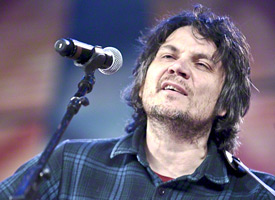 Born in Belleville in 1967, while in high school, Mr. Tweedy formed a close bond with classmate Jay Farrar. The two eventually formed a band called The Primatives. That band would go on to become Uncle Tupelo and according to music critics almost single-handedly created the “alt-country” genre, which combines the plaintive sounds of early country music with the raucous electric guitar and drum sounds of punk. Mr. Tweedy briefly attended Southern Illinois University – Edwardsville before dropping out to focus on music full-time.
Born in Belleville in 1967, while in high school, Mr. Tweedy formed a close bond with classmate Jay Farrar. The two eventually formed a band called The Primatives. That band would go on to become Uncle Tupelo and according to music critics almost single-handedly created the “alt-country” genre, which combines the plaintive sounds of early country music with the raucous electric guitar and drum sounds of punk. Mr. Tweedy briefly attended Southern Illinois University – Edwardsville before dropping out to focus on music full-time.
After Uncle Tupelo’s acrimonious disbanding, Mr. Tweedy founded Wilco and in the process, moved back to Illinois from St. Louis. Settling in Chicago, Wilco became one of the torchbearers for alternative rock music in the late 20th and early 21st centuries. Dropped from their label Reprise for delivering what the label deemed to be “uncommercial” music, the band bought the master tapes and was signed by another label releasing 2001’s “Yankee Hotel Foxtrot” to massive critical and commercial success. 2005’s follow-up “A Ghost is Born” earned the band two Grammy awards.
Most recently, Mr. Tweedy has begun playing shows with his son Spencer under the band name Tweedy.
Learn more:
Jeff Tweedy biography
Wilco homepage
Tweedy - NPR Tiny Desk Concert
- Details
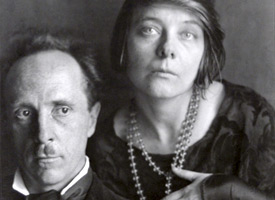 Born in Highland Park, Illinois, Edward Weston is celebrated as one of the most groundbreaking and influential American photographers, having photographed a vast array of subjects, from landscape to narrative, and everything in between.
Born in Highland Park, Illinois, Edward Weston is celebrated as one of the most groundbreaking and influential American photographers, having photographed a vast array of subjects, from landscape to narrative, and everything in between.
Weston’s passion for photography bloomed at an early age after receiving a Kodak Bullseye camera for his 16th birthday. He spent his time photographing Chicago parks and soon purchased a used 5x7 camera, as he began to develop his own film and prints. From this humble start flowered a 40 year career in the arts.
In 1906, Weston moved to Tropico, California to pursue a career in photography. Weston remained in California for the remainder of his life, photographing in and around Big Sur. In 1937, Weston became the first photographer ever to be awarded a Guggenheim Fellowship.
Edward Weston passed away at his home on Wildcat Hill in 1958. His sons scattered his ashes at Point Lobos, later named Weston Beach.
Learn more:
The Edward Weston / Cole Westong family website
Edward Weston at Encyclopædia Britannica
Edward Weston biography at Encyclopedia.com
- Details
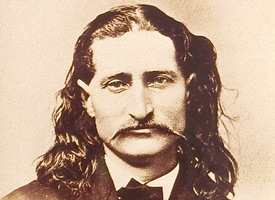 James Butler “Wild Bill” Hickok, historic scout, lawman, soldier and gunfighter was born in Troy Grove, Illinois (formerly known as Homer, Ill.) to William and Polly Hickok. He was recognized as an outstanding shot with a pistol from a very young age. By the age of 18, following a gunfight, he joined a vigilante group known as the “Jayhawkers”, where he met then 12-year-old army scout William Cody, popularly known as “Buffalo Bill.”
James Butler “Wild Bill” Hickok, historic scout, lawman, soldier and gunfighter was born in Troy Grove, Illinois (formerly known as Homer, Ill.) to William and Polly Hickok. He was recognized as an outstanding shot with a pistol from a very young age. By the age of 18, following a gunfight, he joined a vigilante group known as the “Jayhawkers”, where he met then 12-year-old army scout William Cody, popularly known as “Buffalo Bill.”
In the following years, Hickok served as an army scout for the Union Army, as well as a wagon master and police detective. One account even points to his service as a Union spy in Confederate territory between the years of 1862 and 1863. Hickok was mustered out of service in 1865, and spent much of his time near Springfield, Missouri gambling. It was during this time that one of Hickok’s most famous shootings took place.
In the town square of Springfield, Missouri, Hickok met Davis Tutt in what would be forever fictionalized as a high noon, quick draw standoff. In reality, it was more akin to a classic duel, the two men facing each other from a distance, turning to the side to present a smaller target. The two men drew their weapons and took aim. Both men fired. Tutts shot missed, but Bills .36 caliber ball, fired from his Colt 1851 Navy revolver, found its mark, striking Tutt between the fifth and seventh rib on his left side. The incident was sparked over the loss of Bills prized pocket watch during a card game.
Wild Bill’s last days would be spent in Deadwood, in the Dakota Territories. While playing cards at Nuttel & Mann’s Saloon, he was shot in the back of the head by Jack McCall. The cards he held would later be known as a “dead man’s hand,” or aces and eights.
Learn more:
Wild Bill Hickok & The Deadman's Hand
Wild Bill Hickok at HISTORYnet.com
Birthplace of Wild Bill Hickok
- Details
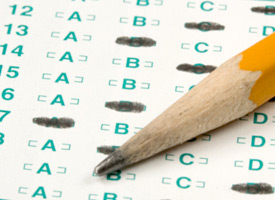 That’s right! The 2014 class of high school students earned a composite score of 20.7 on the American College Testing (ACT) exam. The standardized test uses a scale of 1 to 36 to determine a student’s college readiness.
That’s right! The 2014 class of high school students earned a composite score of 20.7 on the American College Testing (ACT) exam. The standardized test uses a scale of 1 to 36 to determine a student’s college readiness.
Founded in 1959, the three-and-a-half hour exam tests students’ knowledge of math, science, English and reading comprehension. Universities and colleges use ACT scores to determine college applicants’ likelihood of successfully completing their degree programs.
Students with ACT scores ranging between 30 and 36 receive preference at competitive academic institutions. Roughly 75 percent of students at Northwestern University and the University of Chicago attained at least a 34 on their exam. Most students at the University of Illinois-Urbana/Champaign scored at least a 31.
More than 180 Illinois teens earned a perfect score of 36. High ACT scores also attract scholarships, grants and acceptance into honor colleges. Academic-based scholarships can include “full-ride” scholarships or funding that covers most academic expenses, such as tuition and books.
Some of the brightest students in our country are here in Illinois. Congratulations to the high school class of 2014!
Learn more:
Why ACT scores matter
How Illinois students’ scores compare
More about the ACT’s history
- Details
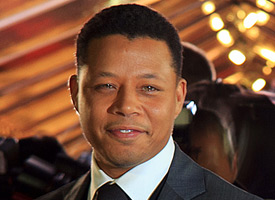 The Oscar, Screen Actors Guild and Golden Globe award nominee was born here in Illinois.
The Oscar, Screen Actors Guild and Golden Globe award nominee was born here in Illinois.
Howard was born on March 11, 1969 and had a rough childhood. He was abused by his father and saw his father commit a crime when he was 2 years old. Howard knew that wasn’t the environment he wanted to be in, and at the age of 16, he legally divorced himself from his parents. At the age of 18, he moved to New York to pursue his dreams of being an actor.
In New York, Howard attended the Pratt Institute, where he majored in chemical engineering. He didn’t end up receiving a degree, because he started to accept small acting roles. One of his first roles was beside Bill Cosby on The Cosby Show. He continued to do television shows until 1995.
Howard has appeared in the movies Big Momma’s House, Angel Eyes, Biker Boys and Ray, just to name a few. He was also in the Academy-Award winning film Crash and received a National Board of Review Award for best breakthrough performance.
Howard currently lives outside of Philadelphia.
Learn more:
Terrence Howard’s Filmography and Movies
Terrance Howard’s IMDB profile
More Articles …
- Did You Know? Melissa McCarthy was born in Plainfield
- Did You Know? Boxing champ Ken Norton was from Illinois
- Did You Know? Acclaimed children’s author and illustrator Shel Silverstein was an Illinois native
- Did You Know? The founder of Walgreen’s was a war veteran born in Knox County
- Did You Know? Elijah Parish Lovejoy ran an anti-slavery newspaper from Alton in the 1830s?





